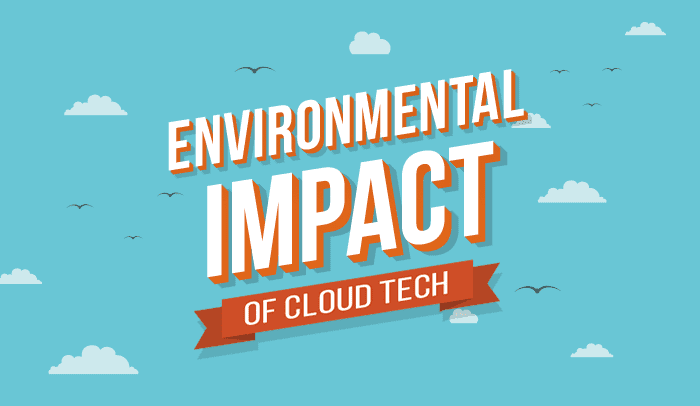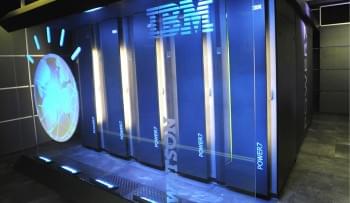Last year, Greenpeace published Clicking Clean: How Companies are Creating the Green Internet. The report took a wide-ranging view of how tech companies are addressing issues of energy, environmental impact, future regulatory pressures, and more. The energy footprint of technology in general and the internet specifically is boggling. For example, let’s just take three common aspects of our online world: watching video content, conducting internet searches, and the generation of spam. Together, in a single year, these three activities are responsible for 38 million tons of CO2 emissions every year. That’s equal to the yearly emissions of over 8 million cars.
But regular old surfing and spamming are only a tiny drop in the bucket when it comes to the internet and the environment. And while the environmental impact of the proliferation of disposable devices with built-in obsolescence (and their thirsty chargers) is also huge, it’s still not the biggest story here. The real monster in the internet’s energy closet is one thing and one thing only: data centers. Brace yourself. This gets scary.
One data center can use enough energy in a day to power 65,000 homes, and there are tens of thousands of data centers spread across the world, many running full tilt 24/7 regardless of demand. Last year, in America alone, data centers used 91 billion kilowatt-hours of electricity, producing 97 million metric tons of CO2. Shockingly, only 6 to 12 percent of their energy draw may be used on computations. The rest goes to maintaining the vast buildings at a cool temperature, and to keeping backup servers idling in case of a crash.
The sheer scale of internet technology can be an asset to the environment as easily as it can be a liability. As of the release of the report, six major cloud brands – Apple, Google, Facebook, Salesforce, Box, and Rackspace had committed to achieving 100% green energy for their data centers. The first, Apple, is already there. Amazon was called out for its backward practices, but relented under public pressure and added its name to the pledge. When big tech companies decide to go green, they lend their enormous weight to positive momentum, with massive results. To quote Greenpeace:
“These commitments are having a profound impact in the real world, shifting investment from legacy coal, gas and nuclear power plants to renewable energy technologies, and disrupting the status quo among major electric utilities.
In US states like North Carolina, Nevada and Iowa, these companies’ commitments to clean energy are resulting in large amounts of wind and solar power displacing coal, gas and nuclear plants or preventing them from being built, to the tangible benefit of the global climate and communities living in those states.”
The focus on renewable energy is a welcome shift, as are initiatives to build data centers in arctic climates where mother nature herself can provide enough cooling for countless serves, but these are only the beginning. Real changes in the way technology itself is used are and will continue to be vital in improving our relationship with the environment and our response to climate change. Cloud technology has a huge role to play in these changes. Obviously, like any other tech, they are not exempt from the energy drains of devices and data centers. Tackling the catastrophic inefficiency of those data centers is one of the most important steps we can take, and happily, infrastructure allocation and boosted server allocation rates are some of the things that cloud storage does best. Enabling multi-tenancy solutions instead of wasteful in-house servers means that resources are shared and efficiency goes through the roof.
A modeling tool developed by researchers at Lawrence Berkeley National Laboratory and Northwestern University, called the Cloud Energy and Emissions Research Model (CLEER) works by estimating the energy savings of shared cloud storage models, depending on the region and overall level of adoption. Researchers produced a case study where the simulation suggested that if all American businesses moved their network software (including things like spreadsheets, email, CMS, etc) to centralized off-site cloud servers, the overall computing energy footprint would shrink by 87 percent. That’s enough to power the entire city of Los Angeles for an entire year.
In some instances, the cloud is playing an important role in a positive feedback loop, where using green tech enables more green tech. In India, one of the country’s largest green energy companies, Bharat Light and Power (BLP), is using cloud technology to build an infrastructure that will monitor, govern, and optimize its wind-farms. These power sources don’t just generate energy: they also generate huge amounts of data. To store, analyze, and understand the insights hidden within that data, BLP is turning to the cloud. In the future, they plan to use social media to connect with customers and gauge issues of demand and service. In a country where 400 million residents live without electricity, but where the plummeting entry barriers to smartphone use means that the internet has a presence in the poorest neighborhoods, this could be a watershed moment.
It’s easy to feel detached from ideas about green energy when we’re discussing global trends and it seems as though the important decisions are being made over our heads and overseas. What has it got to do with you and your business? Bringing things back down to a human, local scale, how can small companies use the cloud to reduce their carbon emissions and overall environmental impact?
Choose Green Cloud Storage
As we’ve seen, data centers can be a massive drain or a massive boon to energy consumption. Moving storage out-of-house is the first step. You’ll reduce your hardware requirements and immediately reduce both power consumption and resource redundancy. Do your research and question cloud storage providers about how their energy is sourced. Don’t assume you need to take a hit on prices or services: clean energy is making very good economic sense at the moment, and you may be surprised to find that green packages are competitive with traditional solutions.
Support Remote Workers
Think about it: less vehicles on the road, smaller offices to power and heat, less consumption in general: small effects add up quickly. Even traditionally slow-moving governments are recognizing the green benefits of working from home. In Canada, British Columbia’s Ministry of Environment has recommended: “Consider a condensed work week or telecommuting as a way to work effectively and cut air pollution.” This is one place where cloud technology really shines. Communication and collaboration tools are getting better, more connected, cheaper, and easier to use every day. So use them.
Go Paperless, or Paper-light, With the Cloud
Digitalizing your documents, e.g. paperless faxing, may sound like a trivial step, but it can have a surprisingly large influence on your footprint. It’s also become easier than ever before, with a proliferation of cloud and smartphone apps which have done away with tedious and cumbersome scanners. It cuts back on waste, both paper -and energy-wise, frees up an astonishing amount of space, and digital information storage and communication is more convenient and more secure than paper.
As with any movement, the conscious and deliberate actions of individuals, SMEs, and multinational corporations are all necessary if we want to create real change. When it comes to greening our use of technology, the cloud may not single-handedly save the earth, but it will play a vital part in the fight. The innovative, disruptive, and future-focused attitude of this sector has already made an important difference.








